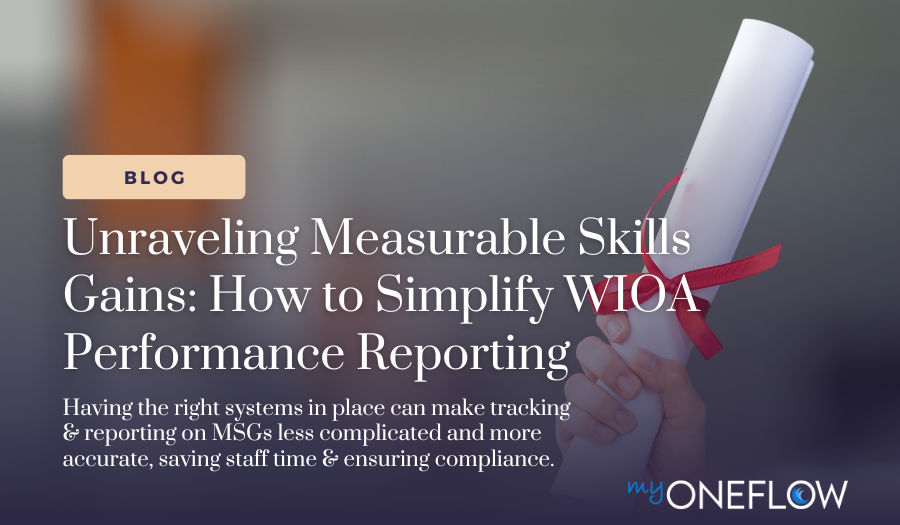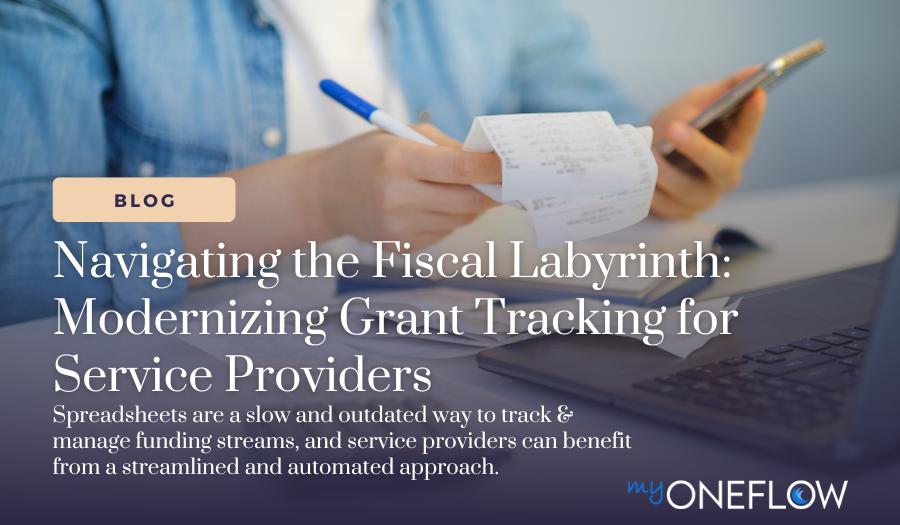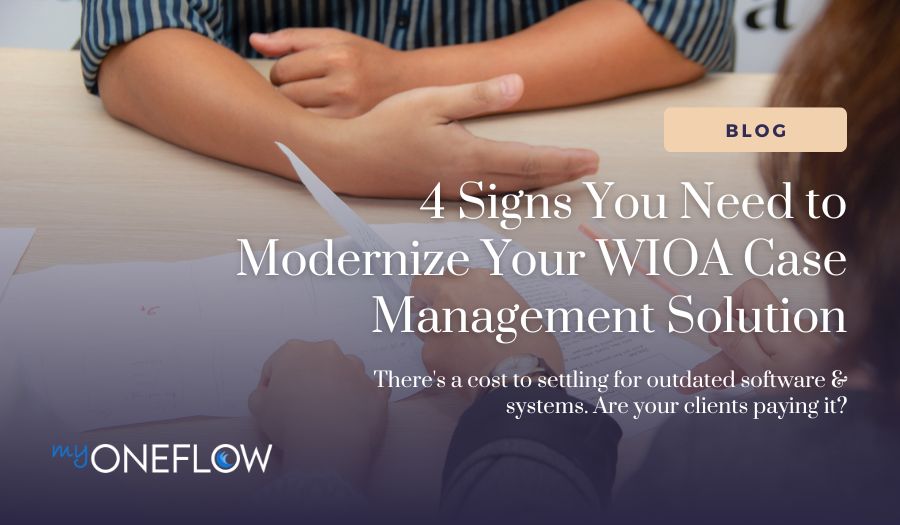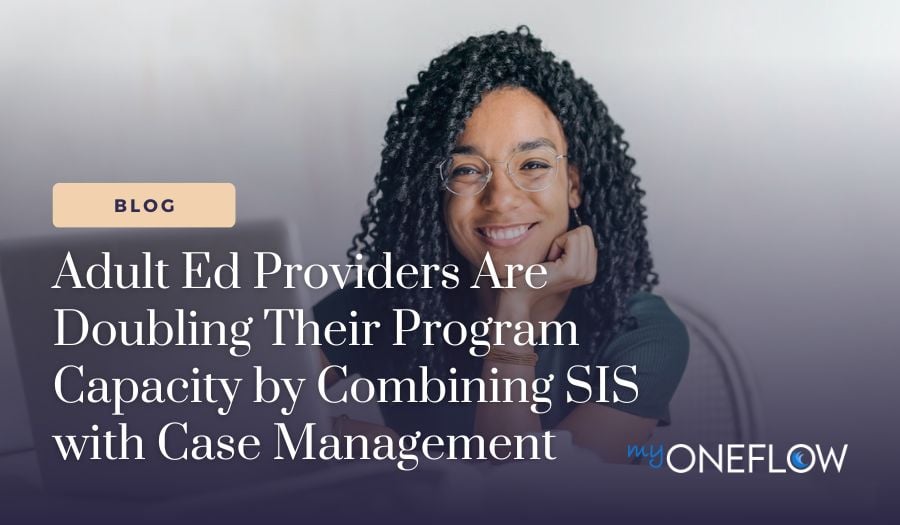Modernizing Grant Tracking for Service Providers: Navigating Fiscal Labyrinth
Workforce development and adult education service providers frequently grapple with the intricate task of fiscal and grant tracking. Juggling funds...
5 min read
myOneFlow Staff Aug 16, 2023 12:58:04 PM

Measurable Skills Gains (MSGs) are a fundamental aspect of evaluating participant progression in WIOA-funded programs and constitute a significant part of PIRL and NRS reporting. Tracking and reporting on MSGs are required for every participant receiving WIOA funds for training or education purposes, and every participant record must reflect at least one MSG for each program year they are enrolled in a WIOA-funded program. Understanding and managing MSGs can be challenging due to their complexities and variations. This often results in inefficient or inaccurate tracking and reporting, wasting valuable staff time and jeopardizing participant eligibility and program funding.
However, managing MSGs doesn't have to be complicated. With the right systems in place, many MSGs can be automatically tracked and reported on with the click of a button. This post will explain the different types of MSGs and break down reporting requirements for workforce and adult ed providers. We'll also cover practical strategies for simplified and efficient MSG management to ensure program compliance and growth while reducing administrative burden.
Under WIOA, there are five types of MSGs that can be used to track participant progress during a program year:
The type of MSG appropriate for a participant can depend on the specifics of their situation and the kind of program they're enrolled in.
PIRL (Participant Individual Record Layout) reporting is a component of WIOA and gathers individual participant data across various performance indicators, including MSGs. Each record in the PIRL contains information about participants' demographics, characteristics, services, and outcomes, with MSGs serving as an integral measure of participants' progress within the program.
The National Reporting System (NRS) for Adult Education is the accountability system for federally funded adult education programs. It establishes the performance measures for states to use in reporting on adult education programs' performance outcomes. Within the NRS framework, MSGs are used to assess learners' progress in increasing literacy skills, which include reading, writing, speaking English, mathematics, and employability skills.
While both PIRL and NRS reporting systems track MSGs, they do so in different contexts. PIRL focuses on broader workforce development indicators, encompassing a range of programs and services, whereas NRS is specific to adult education, particularly focusing on literacy and numeracy gains. Understanding these nuances is critical to effective tracking and reporting of MSGs in both workforce development and adult education settings.
Accurate MSG tracking is crucial for WIOA compliance and funding purposes within workforce development and adult education initiatives. For WIOA-funded programs, MSG tracking is a key performance indicator demonstrating participant progress, a critical aspect of program compliance. Programs are required to show that participants are making measurable gains in their skills, whether through an EFL gain, obtaining diplomas or certificates, or other recognized metrics.
This accurate tracking is not just a measure of compliance but also a demonstration of program effectiveness. Furthermore, the ability to accurately track and report MSGs can directly impact the funding received by workforce and adult education programs. Funders, including government agencies, often base their funding decisions on demonstrated outcomes. Programs that can effectively track MSGs and show positive results are more likely to secure ongoing or increased funding. Therefore, accurate MSG tracking is not just about compliance; it's a strategic necessity for program survival and growth.
Tracking MSGs can be a complex task due to a variety of factors. First and foremost, student progress is not always linear or predictable. Learners may progress at different rates and in different areas, making capturing these gains difficult. Furthermore, the methods used to assess these gains can also vary widely. Various programs may use differing assessment tools, and even within a single program, multiple assessments may be used to measure different types of skills.
This diversity in assessment methods and numerous data points can make it difficult to compare and aggregate MSG data across programs or over time. All these factors contribute to the complexity of tracking MSGs, necessitating careful planning, robust data management systems, and ongoing monitoring and evaluation efforts.
Navigating the complex process of MSG tracking and reporting can seem daunting. However, there are strategies and tools available that can significantly simplify this task, making it more manageable and efficient.
Implementing these strategies requires planning and coordination, but the benefits can be significant. They can dramatically reduce staff administrative burden and enhance the accuracy and reliability of the data generated, leading to better program outcomes and increased funding opportunities.
Navigating the complexities of MSG tracking is an essential yet often challenging aspect of WIOA-funded programs and adult education initiatives. The stakes are high - accurate MSG tracking not only reflects learner progress but directly influences funding opportunities.
Simplifying MSGs is more than operational efficiency – it's a strategic imperative. myOneFlow takes away the headache by providing a single platform with all the integrations staff need for easy MSG tracking and reporting. Integrations with GED, CASAS, and TABE mean test scores can be automatically imported and updated in real time. Configurable portals for participants, staff, employers, and other stakeholders make it easy to keep everyone connected while securely sharing common data and MSGs throughout the participant journey. Plus, myOneFlow is prebuilt with dozens of standardized operational reports, including NRS tables and PIRL reports, so staff can export data in the format they need with the click of a button.
With myOneFlow, MSG tracking becomes less of a challenge and more of a strategic asset for program growth. It's not just about meeting WIOA requirements - it's about enhancing the effectiveness of your program and improving outcomes for your participants. Contact our team today to discuss how myOneFlow can simplify case management and reporting for your organization.

Workforce development and adult education service providers frequently grapple with the intricate task of fiscal and grant tracking. Juggling funds...

In an age of sleek software, automated processes, and personalized workflows, we expect a certain level of sophistication from our technology. We...

When we talk to adult education providers, we hear the same story time and time again. They use different systems – or worse, spreadsheets – to...